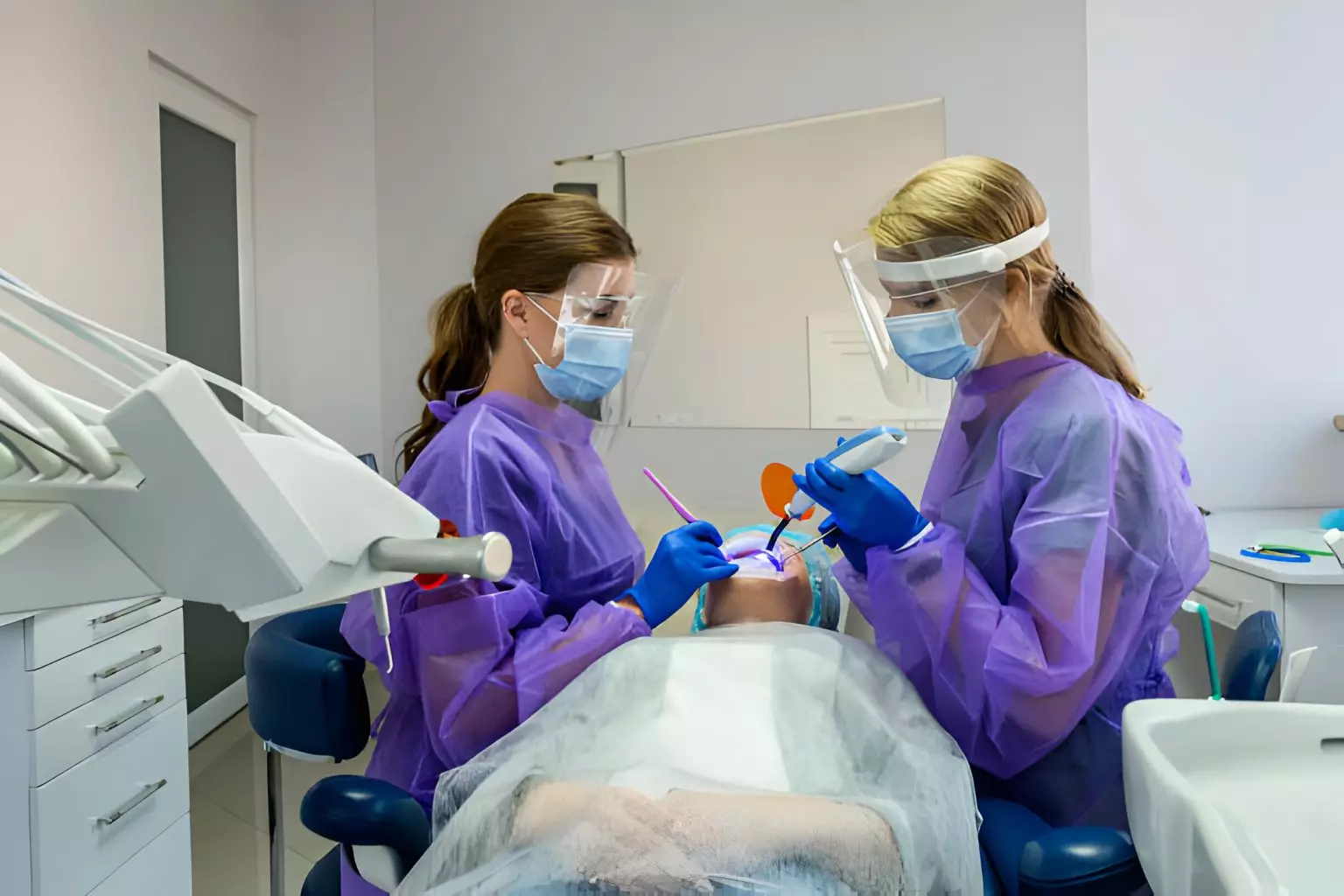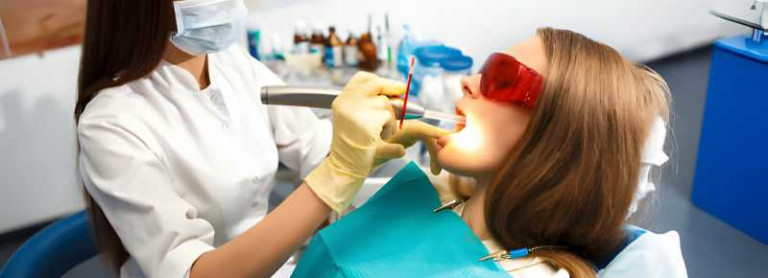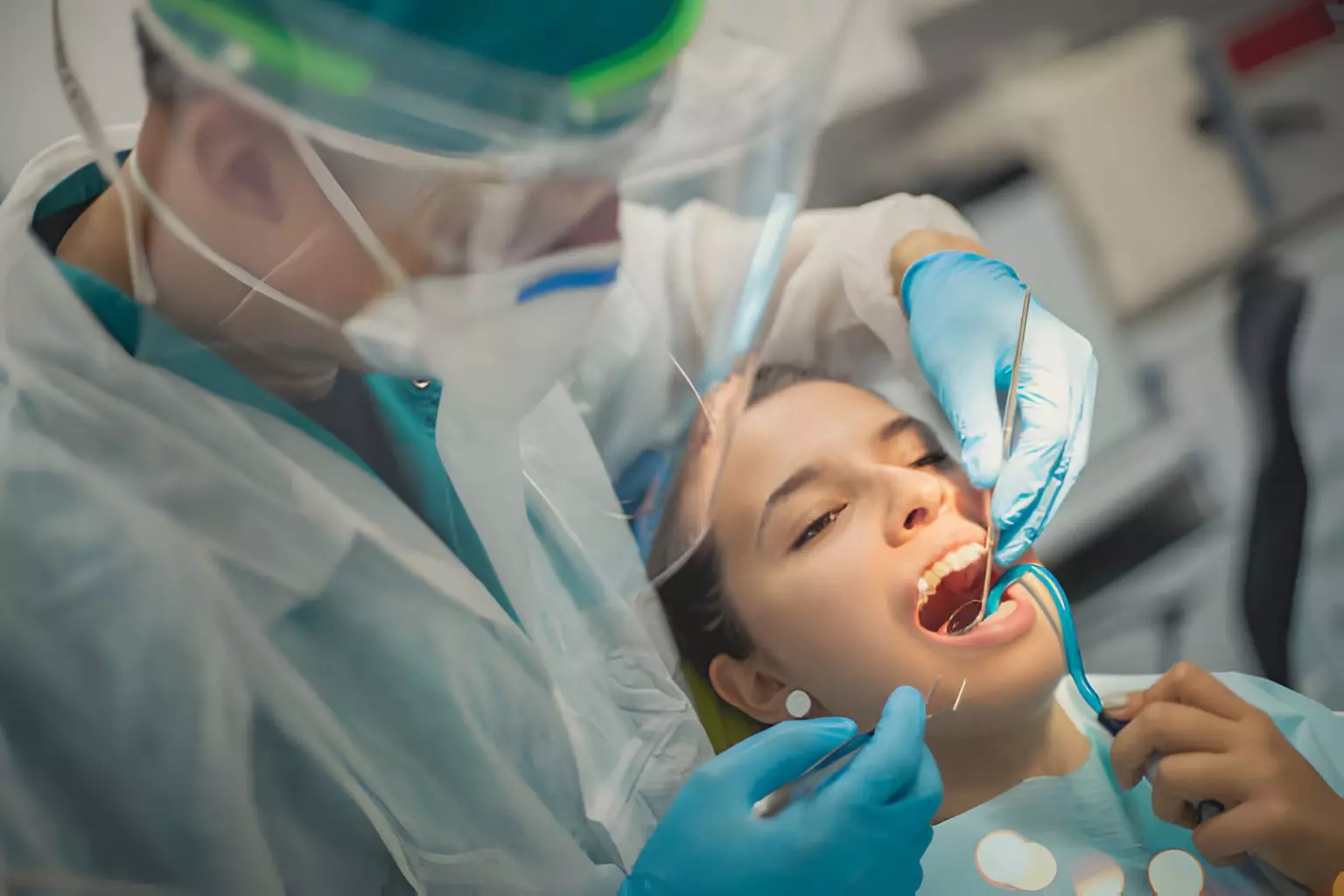Summary:
Are you sure you clean your teeth well with regular brushing and flossing? Chances are you still leave out certain parts where plaque could build and bacteria reside. Brushing and flossing are common oral hygiene practices that help prevent dental issues and problems, but they don’t suffice. Occasionally, you should go for professional deep cleanings to cleanse your teeth thoroughly and remove harmful bacteria and tartar buildup that can threaten your oral health. 
- Why Visit a Dentist For Effective Teeth Cleaning?
- List of Procedures Followed by Dentists Before Teeth Cleaning
- Standard Tools Used by Experts for Teeth Cleaning
Continue reading as we will understand more about the teeth-deep clean experience at a professional.
Why Visit a Dentist For Effective Teeth Cleaning?
Regular oral care at home is crucial for dental health, yet it may not effectively eliminate stubborn plaque and tartar, which can accumulate in areas that are difficult to reach. Prophylaxis performed by professional dentists in Keller or your hygienist is necessary to remove these deposits and prevent potential gum disease and tooth decay. However, 42% of the adults refuse to visit their dentist regularly for various reasons. Professional cleaning removes plaque and tartar buildup that brushing and flossing alone may not reach, reducing the risk of gum disease and tooth decay. Additionally, dentist deep cleaning can spot early signs of potential problems like cavities, gum inflammation, or oral cancer, enabling timely treatment. Effective prophylaxis also helps to keep your smile bright by removing surface stains and boosting your confidence. Overall, scheduling regular cleanings not only preserves your teeth but also contributes to your overall well-being.
List of Procedures Followed by Dentists Before Teeth Cleaning
Many people despise visiting the deep-clean dentist regularly. This is primarily due to their fear of dental equipment, discomfort, pain, etc., among other reasons. However, cleaning is safe and comfortable, and they will rigorously clean your cavity to ensure optimal oral health. Here’s what happens at the dentist if you go for teeth cleaning:
Stage 1 – Pre-Cleaning Assessment and Consultation:
Before your cleaning begins, one of our skilled dental hygienists will review your medical history and discuss any concerns or goals you may have for your dental health. This is an excellent opportunity to ask questions or raise any issues you’ve noticed with your oral health.
Stage 2 – Comprehensive Oral Examination:
Your dentists in Keller will thoroughly examine your teeth, gums, and oral health. This examination may include inspecting for signs of tooth decay, gum disease, oral cancer, and other dental issues. Dentists may take X-rays to provide a more detailed assessment of your oral structures.
Stage 3 – Professional Teeth Cleaning:
Cleaning dentists or dental hygienists clean your teeth and remove tartar, plaque, and surface stains with the help of specialized tools, techniques, and equipment. This process helps prevent cavities and gum disease and leaves your teeth fresh and smooth.
Stage 4 – Gum Health Evaluation:
Your hygienist assesses the health of your cavity during the gums cleaning procedure. During this stage, they measure the depth of your gum pockets and check for signs of inflammation or bleeding. Maintaining healthy gums is crucial for oral health and can prevent severe conditions like periodontal disease.
Stage 5 – Fluoride Treatment (if recommended):
Depending on your risk of tooth decay, your dentist may recommend a fluoride treatment to strengthen your tooth enamel and provide added protection against cavities. Fluoride is a mineral that helps to remineralize and repair weakened enamel, reducing the risk of decay.
Stage 6 – Personalized Oral Hygiene Instructions:
Your dental team will provide personalized oral hygiene instructions tailored to your needs and concerns. It may include recommendations on brushing and flossing techniques and advice on using additional oral care products such as mouthwash or interdental brushes.
Stage 7 – Discussion of Treatment Options:
Suppose the dentist identifies any dental issues during your deep cleaning or examination. In that case, your dentist will discuss treatment options and develop a personalized treatment plan to address your needs. Our goal is to ensure that you fully understand your options and feel confident in the decisions made regarding your dental care.
Stage 8 – Scheduling Follow-Up Appointments:
It’s essential to schedule regular dental cleanings every six months to maintain optimal oral health. Before you leave, our front desk team will help you schedule your next appointment to ensure you stay on track with your oral care routine.
Common Tools Used by Experts for Teeth Cleaning
Maintaining oral hygiene is vital for overall health, and routine dental cleanings are crucial. During a gingival cleaning session, dentists or dental hygienists rely on various tools and equipment to eliminate plaque, tartar, and stains from the teeth, promoting oral health and preventing dental issues. Some of the essential tools and equipment typically employed for teeth cleaning at the dentist are:
Dental Mirror:
This handheld tool features a mirror set at an angle, allowing dentists or dental hygienists to observe areas of the mouth that are otherwise difficult to see, such as the back of the teeth and the gum line.
Scaler:
The scaler is a metal instrument with a hooked or curved tip that the dentist uses to remove plaque and tartar from the teeth. Carefully scraping along the tooth’s surface helps dislodge any buildup.
Ultrasonic Scaler:
Operating at a high frequency, the ultrasonic scaler aids in breaking up and removing stubborn plaque and tartar. It emits ultrasonic vibrations and a stream of water, effectively cleaning the cavity without harming the enamel.
Polishing Cup and Prophy Paste:
Following plaque and tartar removal, teeth are polished using a rotating polishing cup attached to a handpiece. Prophy paste, akin to gritty toothpaste, is applied to the cup to gently buff away surface stains, leaving the cavity smooth and shiny.
Dental Floss:
Employed to clean between the teeth and along the gum line, dental floss accesses areas beyond the reach of toothbrush bristles. Dentists may demonstrate proper flossing techniques and guidance on integrating flossing into daily oral hygiene routines.
Fluoride Treatment:
After cleaning, the dentist may apply fluoride to strengthen the enamel and prevent tooth decay. Fluoride is commonly administered as a gel, foam, or varnish left on the teeth for a specified duration.
Suction Device:
Essential for maintaining a clean and dry treatment area, the suction device removes saliva, water, and debris from the mouth during procedures, improving visibility and patient comfort.
Personal Protective Equipment (PPE):
Dentists and dental hygienists adhere to infection control protocols by wearing PPE like gloves, masks, and protective eyewear during cleaning procedures, ensuring patient safety and preventing the spread of pathogens.
Takeaway
- Professional tooth deep cleaning reduces plaque and tartar buildup, preventing gum disease and decay.
- Pre-cleaning assessment allows discussion of oral health concerns and goals.
- Personalized hygiene instructions guide proper brushing, flossing, and product use for optimal oral health.
- Still, have questions regarding the treatment? Don’t forget to connect with our experts at Keller Family Dental today!






